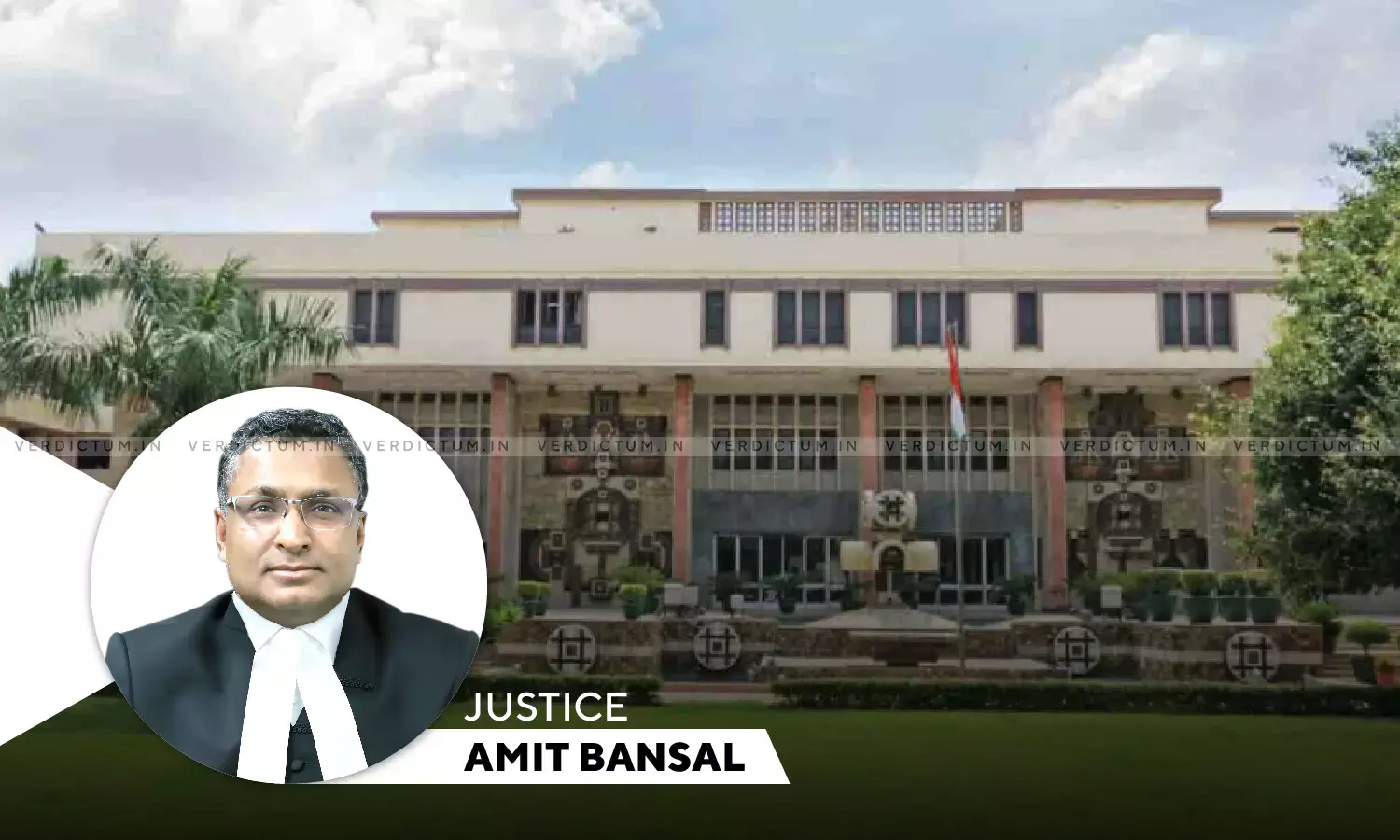Throwing Any Liquid Other Than Acid Would Not Constitute Offence U/s. 326B of IPC: Delhi High Court

The Delhi High Court held that a person can only be convicted of an acid attack if they throw or attempt to throw acid on another person. Any other liquid or substance does not qualify as acid under the law, the Court added.
The Court allowed a Writ Petition seeking to quash an FIR filed by the petitioner's Sister-in-Law. The Court noted that the allegations made in the FIR were inherently improbable and that no material was collected in support of the allegations.
The Bench of Justice Amit Bansal held, “Under Section 326-B of the IPC, an offence is made out only if a person throws or attempts to throw 'acid' on another person, and not any other liquid or substance”.
Advocate Sunil K. Mittal appeared for Rashmee and Additional Standing Counsel Yasir Rauf Ansari appeared for the State.
The Petitioner is the sister-in-law of the Second Respondent. The Second Respondent's son called the police contending that his mother had been thrown acid on. The Second Respondent's medical report showed that she had no external injuries and that her injuries were simple in nature. The Forensic Science Laboratory (FSL) report found that the liquid was hydrochloric acid. Based on the FSL report and the lack of any burn injuries on the respondent, an FIR was registered against the Rashmee under Sections 326B and 506 of the Indian Penal Code (IPC). Aggrieved, Reshmee approached the Court seeking to quash the FIR against her.
The Court noted that per Section 326-B of the IPC, an offense is committed only if a person throws or attempts to throw acid on another person. If Rashmee had thrown acid on the respondent, the respondent would have suffered external injuries, and traces of the acid would have been found on her body. Even if the Petitioner had thrown a diluted acid on the respondent, it would have left marks and inflammation on the respondent's skin. However, the respondent's medical report shows that she had no external injuries or scars.
Furthermore, the Court quashed the FIR alleging an acid attack, finding that the case was frivolous and vexatious and instituted with an ulterior motive.
The Court observed that High Courts are empowered to quash an FIR and/or criminal proceedings under Section 482 of the Code of Criminal Procedure if the proceedings are manifestly frivolous or vexatious or instituted with an ulterior motive. In such cases, the High Court can go beyond the averments made in the FIR/complaint and examine if the ingredients to constitute the alleged offence are made out or not.
The Bench noted, “A reading of the aforesaid judgments of the Supreme Court makes it amply clear that in exercise of the inherent powers under Section 482 of the CrPC, the High Court has the power to quash an FIR and/or criminal proceedings on the ground that the said proceedings are manifestly frivolous or vexatious or instituted with ulterior motive. The High Court can go beyond the averments made in the FIR/complaint and 'read between the lines' to examine if the ingredients to constitute the alleged offence are made out or not. In order to achieve this, the High Court can take into account the overall facts and circumstances of the case and the material collected in the course of investigation. Of course, while exercising the aforesaid powers, the High Court must exercise due caution, care and circumspection”.
Additionally, the High Court found that the FIR in the case was filed in a mala fide manner on account of a property dispute between the parties.
Accordingly, the Court allowed the Writ Petition and quashed the FIR and chargesheet.
Cause Title: Rashmee Kansal v The State and Anr. (2023:DHC:8114)

